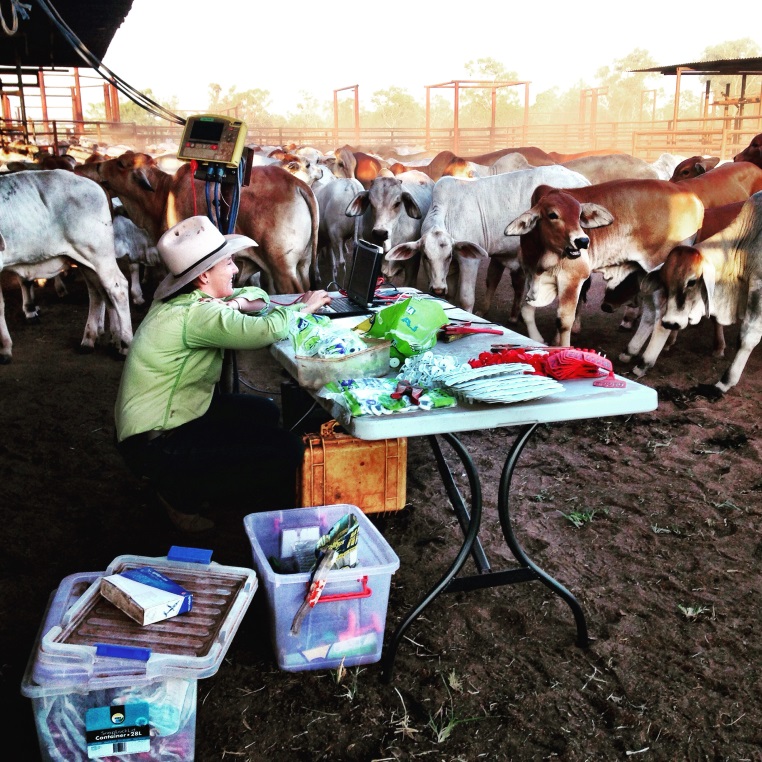Principles of vaccine handling
Written by Jodie Ward, Beef extension officer Department of Primary Industry and Resources (DPIR) and Lee Taylor, Senior Veterinary Technical Manager, Zoetis
Results from the 2010 Pastoral Industry Survey indicate that a large majority (92%) of the stations on the Barkly routinely vaccinate the herd for botulism, while more than half (62%) of those surveyed annually vaccinate their bulls for vibriosis (Collier, C 2014).
However I ask you, are you confident that you have done the best you can to make sure those vaccines were effective?
Vaccines have been proven to be effective at preventing the targeted disease however once the vaccine has left the manufacturer there are a number of ways that the contents can be rendered ineffective. Below are some tips to ensure your vaccines are effective.
At the station
- Most vaccines need to be kept between 2⁰C and 8⁰C at all times, therefore placing a thermometer that can record maximum and minimum temperature in the fridge is ideal for tracking temperature fluctuations and making sure your vaccines are kept in prime working order. While you’re there, check the seals on your vaccine fridge.
- When bringing home new vaccines, bring the old stock to the front to be used first and discard any that have passed the expiry date.
- Some vaccines should be used on day of opening, some can be used the next day, some can be used after 30 days of opening. Read the label. Never put opened packs of vaccine back in the fridge with a vaccinator gun still attached. Remove the draw off tube and clean the vaccinator gun.
- If you have a good quality vaccination gun that needs to be cleaned (as should be done after each session of use), DO NOT use disinfectants or antiseptics as these may interfere with the next vaccine used and damage seals in the gun. The best practice method is to wash the gun out with dishwashing liquid to remove vaccine residue, flush with clean tap water, reassemble the gun, lubricate it (using the manufacturer recommended oil to ensure seals and valves are kept in good order), fill the gun with water and boil vaccination gun for 10 minutes. Air dry the gun and then store the dry gun in a zip lock bag in the vaccine fridge once reassembled.
At the yards
- Invest in a vaccine cooler. Made out of wet suit material, this cheap yet effective device will keep your vaccine out of direct sunlight, and if pre-chilled before use, they will keep your vaccine cooler
- Keep your vaccines in an esky with ice bricks when not being used, such as in between race loads of cattle or during meal breaks. Rather than allowing direct contact between the ice bricks and the vaccine container, wrap the ice bricks in newspaper, this will prevent the contents of the vaccine getting too cold and potentially freezing, rendering it ineffective
- A car fridge on site is an excellent option to store unopened vaccines until they are needed. Make sure to check the temperature is between 2⁰C and 8⁰C.
- There is a new draw off tube in each pack of vaccine. Use a new one with each pack of vaccine.
- Use clean, sharp needles. Replace needles after every 30-50 head
As equally important as setting up the data recording equipment, is the care you take of your vaccine.
During transport
- Temperature control and exposure to direct sunlight are important factors to consider during transport as well. If going to town to collect vaccine, leave home prepared with enough space in an esky or car fridge to keep your vaccines cool on your travel home
However, beyond all other recommendations, if you’re unsure of what the right vaccine specifications are, it is best to read the manufacturer’s instructions inside the box. The key points are to keep vaccines cool and away from light when not in use. Treat them like milk – keep them clean and free of contamination
For more information about vaccination schedules or correct application technique, simply type “vaccine” into the search function of https://futurebeef.com.au/
References: Collier, C. 2014. The 2010 Pastoral Industry Survey - Barkly Region. Northern Territory Government, Australia.
Give feedback about this page.
Share this page:
URL copied!
